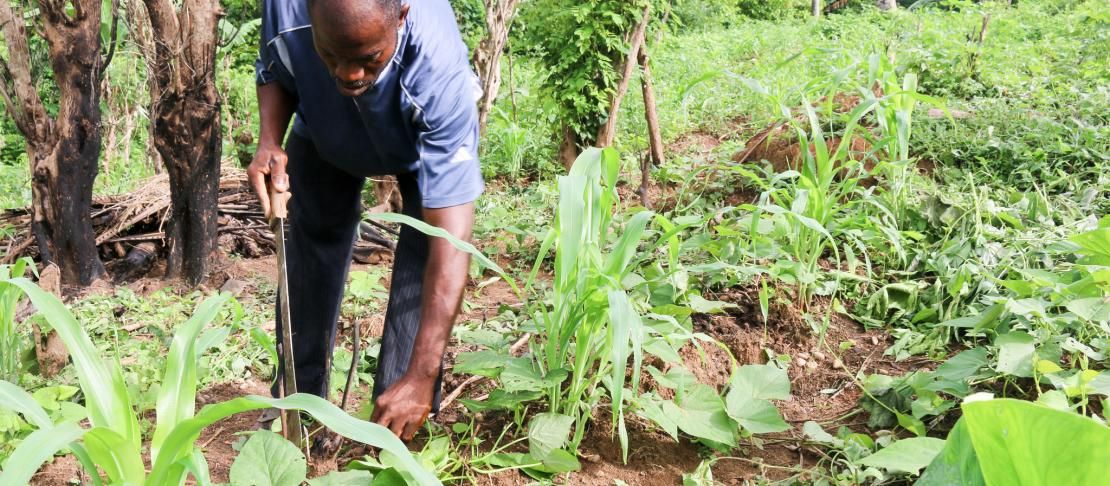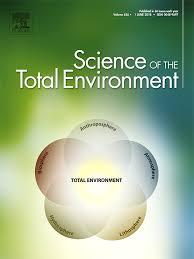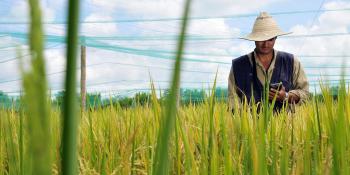Understanding rainfall variability, drought and farmers’ coping strategies in Nigeria

Crop and livestock production is a major source of income for many people in Nigeria. But prolonged dry spells have become much more common in recent years, leading to crop and livestock losses in many parts of the country.
Drought is a major challenge for agricultural production in sub-Saharan Africa. Since most rural families in Africa depend on agriculture for their food and income, drought can have devastating effects on these families, especially on poorer farming communities with less diversified livelihoods and few economic alternatives.
A new study co-authored by scientists from the CGIAR Research Program on Climate Change, Agriculture and Food Security (CCAFS) East Africa Regional Program examines anomalies in seasonal rainfall and drought characteristics in two agro-climatic zones—Rainforest and Guinea savanna—in Nigeria. It also explores how farmers perceive drought and their coping strategies. The study uses quantitative and qualitative methods, combining historical climatic data on daily rainfall and temperature (1984‒2014), household questionnaires and focus group discussions.
The results show that there are several anomalies in rainfall in recent years in the two agro-climatic zones, with variations in the rainfall amount received during growing seasons in different agro-climatic zones. The amount of rainfall received in the Rainforest agro-climatic zone was higher than that in the Guinea savanna. In recent years, it has been observed that rainfall is more reliable from May until July, and less reliable in March, August and October.
Historical climatic data illustrates that the probability of dry spells occurring within the growing seasons varies from month to month. To evaluate the intensity of dry spells, the study assessed the probability that dry spells will exceed specific numbers of consecutive days, with the results showing that the probabilities of a dry spell exceeding 3, 5, 10 and 15 consecutive days are very high in areas within the Guinea savanna zone compared to areas in the Rainforest zone.
Drought has a major impact on the agricultural production of smallholder farmers in the two zones. Nearly 85% of the populations in the selected communities are farmers and almost all of them farm without mechanical equipment. Results from focus group discussions reveal that farmers’ perceptions of drought and climate change mirror climatic patterns from historical meteorological data, showing that drought has now become a recurrent phenomenon with longer dry seasons. Many farmers observed the frequency of droughts during the rainy seasons and believed it was a result of climate change. Most farmers complained that drought threatened their agricultural production and subsequently their income, livelihood and food security.
Different farmers have adopted diverse strategies to cope with drought. Drought coping strategies by the majority of crop farmers included mulching, changing planting dates, scaling down production to reduce crop loss, planting drought-tolerant crops, and irrigation. Drought coping strategies by livestock farmers included migration to green pasture, use of crop residues and by-products from soybean, groundnuts or cowpeas for feed, with others seeking alternative sources of income. Farmers also complained about their inability to purchase material and equipment to cope with drought because the equipment was too expensive.
Limited financial resources and lack of knowledge on how to design and implement effective adaptation measures makes it difficult for farmers to cope with the impacts of climate change. Efforts should be made to develop crop varieties that can cope with the current conditions of climate change in Nigeria. To help increase the resilience of smallholder farmers, it is also important that the work of research organizations such as CCAFS informs policymaking. For example, CCAFS teams in collaboration with Nigeria's Federal Ministry of Agriculture and Rural Development (FMARD) and the International Center for Tropical Agriculture (CIAT) developed a roadmap for climate insurance that is designed to guide the development of inclusive insurance for Nigeria’s agriculture sector.
Read the study: Ayanlade A, Radeny M, Morton JF, Muchaba T. 2018. Rainfall variability and drought characteristics in two agro-climatic zones: An assessment of climate change challenges in Africa. Science of The Total Environment 630:728-737.
Read more
- Blog: How do Nigerian farmers understand climate change?
- Working paper: A roadmap for evidence-based insurance development for Nigeria’s farmers
This study was undertaken by Dr. Ayansina Ayanlade from Obafemi Awolowo University in Nigeria during his Climate Impact Research Capacity and Leadership Enhancement (CIRCLE) fellowship with the CGIAR Research Program on Climate Change, Agriculture and Food Security (CCAFS).
The Climate Impacts Research Capacity and Leadership Enhancement in Sub-Saharan Africa (CIRCLE) programme is an initiative of the UK's Department for International Development (DFID) to develop the skills and research output of early career African researchers in the field of climate change and its local impacts on development
Lili Szilagyi is the Communications Consultant for CCAFS East Africa.




